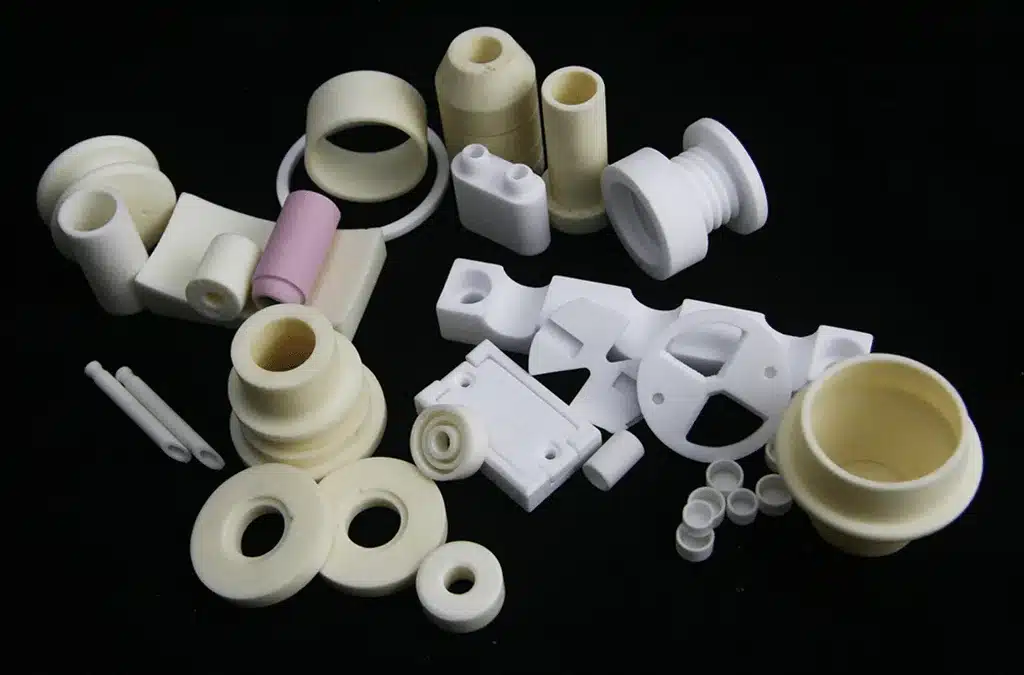Ceramic injection molding (CIM) is a cutting-edge technique in the world of manufacturing that combines the best of metal injection molding and traditional ceramic processes. It offers an innovative solution for producing complex, high-performance ceramic components in industries ranging from aerospace to electronics, combining the precision of plastic injection molding with the durability of ceramics. By understanding the basics of ceramic injection molding, we can appreciate how this process is shaping the future of material engineering.
What Is Ceramic Injection Molding
At its core, ceramic injection molding involves mixing ceramic powders with a binder material to create a feedstock that can be injected into a mold. This method is particularly advantageous for creating complex ceramic parts that would be difficult or impossible to make using traditional ceramic manufacturing methods. The process begins with creating a mold, followed by injecting the ceramic slurry into the mold cavity under high pressure. After cooling, the part is removed from the mold and subjected to a thermal debinding process, which removes the binder material, leaving behind a pure ceramic component. The final step involves sintering, a heat treatment that densifies the ceramic part to its final form.
Why Is Ceramic Injection Molding Gaining Popularity
Ceramic injection molding is gaining traction due to its ability to produce intricate parts with tight tolerances, low material waste, and fast turnaround times. Traditional ceramic manufacturing methods, such as casting or pressing, are often limited by the complexity of the shapes they can create. In contrast, CIM allows for the production of highly complex and small-scale ceramic parts that are still durable and precise. This capability has made it a favorite in industries that require high-performance components, such as automotive, medical, and electronics.
Moreover, CIM is well-suited for mass production, making it an economical choice for industries that need to produce parts in large quantities. The ability to produce high-quality components quickly and at scale has led to its widespread adoption in critical sectors.
The Materials Used in Ceramic Injection Molding
The materials used in ceramic injection molding play a crucial role in the final product’s performance. The primary material is ceramic powder, which is chosen based on the desired properties of the finished part. Some of the most common types of ceramics used include alumina, zirconia, and silicon carbide. These materials offer high strength, heat resistance, and electrical insulating properties, making them suitable for a wide range of applications.
Alumina, for example, is widely used for components that require high wear resistance and electrical insulation, while zirconia is favored for its toughness and thermal shock resistance. Silicon carbide, on the other hand, is known for its high thermal conductivity and strength, making it ideal for applications in high-performance environments.
The binder material, which is combined with the ceramic powder to form the feedstock, is typically a polymer that can be easily melted or burned off during the debinding process. The selection of binder material is essential because it can affect the flowability of the feedstock and the final part’s strength and porosity.
The Process Behind Ceramic Injection Molding
The ceramic injection molding process can be broken down into several stages, each contributing to the creation of high-quality ceramic parts.
- Mixing and Preparation: The first step is mixing ceramic powder with a binder material to create the feedstock. The ratio of binder to ceramic powder is critical to ensuring that the feedstock has the right flow properties for injection molding. The mixture must be homogenous to prevent defects in the final part.
- Injection Molding: The prepared feedstock is then injected into a mold under high pressure. The mold’s design will determine the shape and complexity of the final part. Once the feedstock is injected, it is left to cool and solidify.
- Debinding: After the molded part is removed from the mold, it undergoes a debinding process. This involves heating the part to a specific temperature to remove the binder material, leaving behind a porous ceramic structure.
- Sintering: The final step is sintering, where the part is heated to a high temperature to densify the ceramic material and improve its mechanical properties. Sintering causes the ceramic particles to bond together, resulting in a solid, durable component.
Applications of Ceramic Injection Molding
Ceramic injection molding is used across a variety of industries, each benefiting from the unique properties of ceramics. Some of the most common applications include:
Aerospace: In aerospace, ceramics are used for components that must withstand high temperatures and harsh conditions, such as turbine blades and heat shields. CIM allows manufacturers to produce these parts with complex geometries that are both lightweight and strong.
Medical Devices: The medical industry relies on ceramics for implants, dental components, and surgical instruments. CIM’s precision and ability to produce biocompatible parts make it ideal for these applications.
Electronics: In electronics, ceramic components such as capacitors, insulators, and semiconductors are critical for performance. The high electrical insulating properties of ceramics make them essential in the production of electronic devices.
Enhancing Performance Through Technology Integration
As manufacturers strive to increase the performance and functionality of their ceramic components, many are turning to advanced technology solutions. One such solution is incorporating fitness principles, such as performance tracking and body optimization, into production. For example, fitness companies, as Maximum Fitness Vacaville, focus on maximizing human potential and have been integrating high-tech devices to help track and improve their clients’ physical limits. These devices monitor key metrics such as heart rate, calorie expenditure, and muscle endurance. Just as companies in the fitness industry are focused on helping clients reach peak performance, the ceramic injection molding process aims to maximize material performance in a similar way, optimizing each phase from molding to sintering for the best results. The same philosophy of continuous improvement and tracking is evident in how manufacturers use data and technology to refine and optimize ceramic parts, pushing the boundaries of material science.
The Benefits of Ceramic Injection Molding
Ceramic injection molding offers numerous advantages over traditional ceramic manufacturing methods. One of the key benefits is its ability to produce complex shapes with high precision, reducing the need for additional machining or post-processing. This not only speeds up production but also reduces costs.
Additionally, CIM allows for the use of a wide range of ceramic materials, each offering unique properties for different applications. The process can be tailored to meet the specific needs of various industries, making it a versatile choice for manufacturers.
Another benefit is the high level of repeatability and consistency that can be achieved through the CIM process. Once a mold is created, it can be used to produce thousands of identical parts, ensuring uniformity in quality and performance.
Looking Ahead: The Future of Ceramic Injection Molding
As industries continue to demand higher-performance materials, ceramic injection molding is poised to play an even more critical role in the future of manufacturing. Ongoing research and development are focused on improving the materials and processes used in CIM, making it possible to produce even more advanced ceramic components.
Ceramic injection molding offers a fascinating glimpse into the future of manufacturing. By combining the strengths of ceramics with innovative molding techniques, it provides a solution for creating high-performance components across a range of industries. The potential for further advancements in CIM is vast, making it an exciting area for manufacturers and engineers to explore.

Markmalte is an experienced writer for The Celebrity Niche, specializing in celebrity stories. With a keen eye for detail, he brings the latest updates on celebrity relationships, biographies, and news to his readers.







